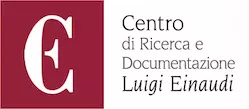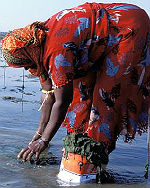Obiettivo dell'iniziativa Manzanar Mangrove è di creare intere foreste di mangrovie in vaste aree del mondo dove questo albero non cresce: in Eritrea i risultati sono stati brillanti
As highlighted in the previous article Being Smart, Being Agri, in developing areas the most suitable improved agricultural technology varies according to local, environmental and socio – economic factors. Nevertheless, five common characteristics can be identified: improved agricultural technologies are 1) labour – intensive, 2) smart, 3) territorial connected, 4) innovative, and 5) communitarian.
Departing from these assumptions, one of the most astonishing seed of this new Agricultural Revolution is represented by the Manzanar Mangrove Project in Eritrea (Figure 1). Enhancing agricultural productivity and competitiveness by the utilization of improved techniques is per se a well – known practice in the African Sub – Saharian territory: indeed, among others, it can be recalled the self – reliance initiative of rural development in Sudan (Ibrahim, Zulu, 2014) or the case study in Burkina Faso which connects the effect of animal traction and non – farm income with better economic performances of the subsistence sector. However, the unique characteristics of the Manzanar Mangrove Project make its impact even more significant and remarkable. Even though the project achieved valuable results, it is hardly mentioned in the literature: indeed, most of the accessible information derive from speeches and lectio magistralis of the project’s founder, Dr. Gordon Sato, or from documentaries and articles specialized in environmental issues. This article analyses the trend in agricultural productivity, profitability and rural – urban migration in the Eritrean areas in which the project has been implemented, utilizing mainly and also World Bank datasets.
It is however essential first to underline that Eritrea is no common country: Eritrea is a young nation – state, which obtained independence in May 1991 after a thirty – year war against Ethiopia. After an initial period of development gain, a border dispute with Ethiopia raised new tensions, leading today to a situation of “no war, no peace” (WB, 2012). The government is an authoritarian presidential regime and the international relations of the country are rare: for example, very little bilateral agreements has been signed with the United States and the European Union; even though it is a member of United Nations, the African Union and it is an observing member in the Arab League, the Eritrean government has perpetuated a political isolation of the country, boosted even further after the sanctions of the UN Security Council in 2009. The relations with humanitarian agencies and foreign donors are troubled as well.
Growth, in absolute term, is small in Eritrea and the region is one of the least developed countries in the World: the 2014 GDP of the country is $3.858 billion (Figure 2 and Figure 3) according to the World Bank and it is classified as a low income region (WB, 2015). In 2010, two – thirds of the population lived in rural areas: indeed, between 1991 and 2012 the countryside population has actually increased. Figure 4 reports the division between rural and urban population and their respective growth. Rain – fed agriculture, the predominant economic activity, is a very risky enterprise and food security remains one of the government’s main concerns: however, a systematic rehabilitation of the rural infrastructure and the use of micro dam fed irrigation methods have improved the condition of agricultural production, mitigating partially the phenomenon; although Eritrea was probably one of the few countries meeting the Millennium Development Goals regarding HIV/AIDS reduction, children health and malaria mortality prevention, these features seem to be not enough to ensure a prosperous growth. Eritrea offers several challenges to traditional economic paradigms: being almost completely disconnected from the international organizations, it follows a path of development pretty unique. Moreover, youth unemployment and underemployment is high (Figure 5) and young skilled workers are often unable to find a job.
The target of the Manzanar Mangrove initiative (Figure 6) is to create whole new forests of mangrove trees in vast areas of the world where mangrove do not grow at the present time; this would contribute to alleviating poverty in parts of the world and to diminishing the threat of global warming. Poverty would be reduced by creating a renewable resource, i.e. mangrove tress which produce valuable timber, and by enriching the fish populations of adjacent seas; the project Planting Mangroves 2000 has enlarged the use of mangroves also as fodder for camels, goats and cattle. Furthermore, the mangrove forest would fix the emission of carbon dioxide (CO2) by photosynthesis into mangrove lumber, decreasing therefore pollution and global warming.
The ambitious plan was developed by Dr. Sato, Distinguished Research Professor and Director of the laboratory of molecular biology at the Clarkson University and Director Emeritus at the W. Alton Jones Cell Science Centre, who has long dealt with the task of trying to cultivate food in harsh environment, such as the desert; this special interest was determined by the period in the Manzanar Relocation Camp in the Californian desert. Born in Los Angeles in 1927, he was relocated with his family in the Manzanar Camp during the II World War, in one of the ten structures where Japanese – American individuals were forced to move from 1942 to 1946, characterized by extreme weather conditions, inadequacy of the buildings and increasing tensions. The project implemented in Eritrea carries the consequences of this experience and aims at creating an anti – Manzanar environment.
Taking advantage of his studies in biophysics and biochemistry with the Nobel Prize winner Max Delbruck, Sato conducted hands – on researches in aquaculture and bio saline agriculture in Eritrea’s coastal region for over a decade; the project reflects the certainty that mangrove plantations hold the key to putting Eritrea and other arid countries with desert coasts on the road to sustainable development and prosperity. The key element in the Manzanar Mangrove Project is the use of low – tech biotech methods combined with the only resources available: sunshine and seawater.
Eritrea has approximately 1500 kilometres of desert sea coast (including islands); mangroves grow in only 15% of the coastal intertidal zone and, where they grow, they form a narrow fringe, usually no more than 10 metres wide. It is observed that the mangroves typically occur in areas where seasonal rains are channelled to enter the sea each year, so many researchers deduce that fresh water per se is required in the cultivation. However, Sato rejects this conventional explanation, arguing that the amount of fresh water and the duration of flow are too short to affect salinity at any extent; his explanation is that the fresh water is bringing nitrogen, phosphorus and iron from land. Indeed, it can be seen that sea water contains all the mineral elements in sufficient quantity to support plant growth except for the three previously listed.
The aim of the Manzanar project was therefore to extend the plantation of mangroves also to the 85% treeless, intertidal areas of Eritrea, supporting the plants with nitrogen, phosphorus and iron; subsequently, methods were developed to deliver fertilizer at a controlled rate that greatly reduces the possibility of run off. The type of mangrove predominantly used is the Avicennia Marina, which contains 19% protein by dry weight. The results have shown that without the fertilizer the plants were not able to grow: however, where three tons of fertilizer is applied per hectare, the process was completely successful. Mangroves can be used for different purposes: they provide the perfect medium for the growing of myriad of tiny organisms, including algae and plankton, therefore innumerable fish, shellfish, reptiles and birds can find food and sanctuary among the roots; by filtering out silt, excessive nutrients and pollution, mangroves encourage also the growth of nearby seagrass beds and coral reefs, thus protecting fishing and tourism revenues. In addition to these precedent benefits, mangroves have also a great commercial potential: they are excellent sources of fodder for cattle, goats and sheep and they can also provide directly saleable products, such as cork, paper pulp, tannin, dyes and medicines. Moreover, the use as fodder for animals result indeed particularly interesting.
Is the Manzanar Mangrove Project a seed of the new Revolution? The mangroves plantation mechanism described previously hardly involve any machines or modern equipment; indeed, for providing a slow released fertilizer to trees, the workers place 500g of a 3:1 mixture of urea and diamonium phosphate in a polyethylene bag, which is buries next to the mangrove and connected to the plant thanks to a nail hole punctures. This mechanism appears to be complicated, true, but does not involve any type of mechanization; similarly, all the other steps in the growing process do not involve any high technological instruments and, even during the harvest procedure, the only factor of production implied besides the land is labour. Therefore, it is possible to assert that the Manzanar project utilizes a labour - intensive technology. However, besides labour and land, there is another factor which is predominantly contributing in this framework: knowledge; indeed, without the right quantity of fertilizer, the right position of the polyethylene bag and the addition of the chemical components, the mangroves cultivation would be useless. All these three features classify the Manzanar Mangrove technology among the improved techniques described before.
The project of Dr. Sato was developed firstly in the village of Hirgigo not by chance: indeed, this small land ten kilometres south of Massawa was indeed one of the poorest and driest places on earth. Farmers interviews collected by Cawthorne (2008) show that both fishing and livestock farming gain from planting mangroves. Ali Osman, Eritrean fisherman, declares that if it was not for the mangroves, there would not be so many fishes, while Salih Mohamud, a 60 – year old father of four children, states that thanks to the mangroves’ leaves he was able to increase his sheep flock from three units up to fifteen units: “I was poor, now I am rich” he declared. The majority of the workers on the projects, planting trees and collecting the leaves are women, who draw a monthly of about 600 nafka ($40) for the first time in their lives. Fishermen picture in few words the magnitude of the Sato’s project on their living standards: “In past days, the fishing here was so poor, but now we have enough to take home for our family to eat and to sell to our neighbours”. Moreover, mangroves seeds are easy to transport and can be stored indefinitely, advantages that make them particularly valuable in times of drought when other food is not available and animals would starve; besides a higher income, family run businesses in the Eritrean subsistence sector have acquired also a remarkably resilience thanks to the Manzanar project.
Development is not only a matter of science, Dr. Sato underlined in his lecture in occasion of the Lifetime Achievement Award of the Society for In Vitro Biology in 2002: development is a matter of joining science with politics and culture.
© Riproduzione riservata











